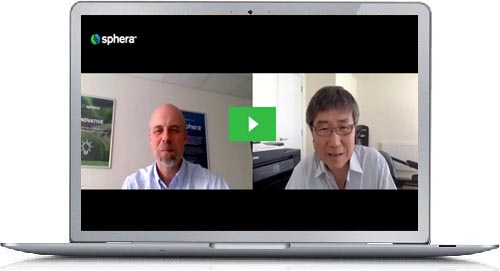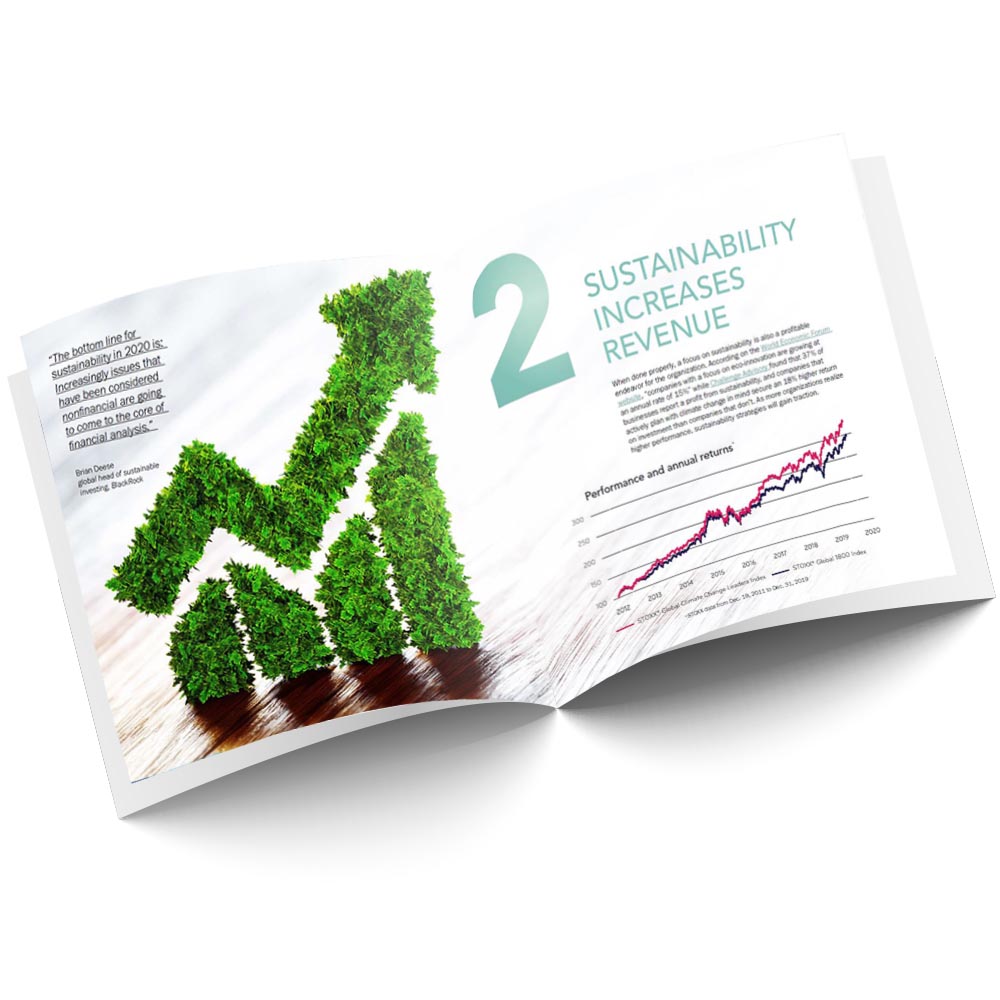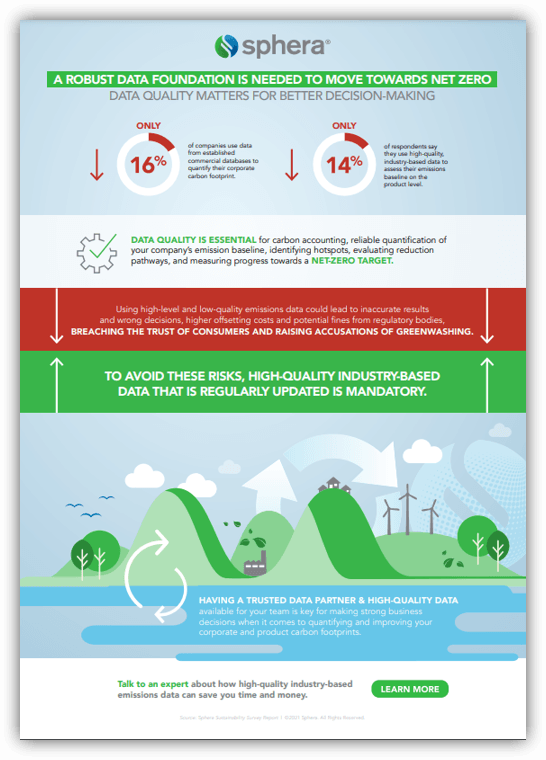In the debate on how to act during our current climate crisis, many organizations are very vocal about achieving a net-zero emissions target. Municipalities, companies and even the European Union have announced that they will become climate neutral. And most of the announced plans include one important component: carbon offsetting. Offsetting the carbon footprint is a process of compensating for CO2 emissions that an organization has made by financing a project to reduce CO2 emissions or other greenhouse gases elsewhere through another means such as CO2 sequestration.
In a world that still runs mostly on fossil fuels, voluntary offsetting of a large amount of one’s greenhouse gas emissions (GHGs) is critical to achieving net-zero emissions targets. Despite the criticism of carbon offsetting as the “selling of indulgences,” it’s a big first step—in a global context with limited carbon taxes—to create greater consciousness about reducing emissions.
In the following overview, I’ll outline the challenges facing carbon offsetting programs and give you seven key recommendations for offsetting your own emissions.
Keep in mind that there are dozens of different organizations, standards and ways to offset your emissions. The most traded offset categories by volume from 2008 to 2018 were agriculture projects, industrial manufacturing projects, energy efficiency and fuel switching, forestry and land use and household devices in the Global South (e.g., clean stoves, water purification, etc.), in that order. For an organization, moving from conception to final offset takes two and a half years on average.

1. Quantify, Reduce & Eliminate First
Before we begin, keep in mind the following: first think about the steps you can take to reduce your current negative environmental impact. Once you have explored all areas for emissions reductions, offset those emissions which cannot be eliminated. If necessary, work with a consultancy to accurately quantify all your emissions and target hotspots for change. After you’ve done everything you can, quantify the emissions you will need to offset.
2. Rely on Standards
The next step is to identify the right project you want to support for offsetting and the specific organization you will work with. While scanning the market for an offsetting partner, you’ll find dozens of offers from a wide range of retailers. There are many ambiguous projects, even among the more established sellers. So make sure that you look for projects certified by recognized standards. There are different standards, depending on the topic and region. We recommend choosing projects according to certification standards such as Verra’s Verified Carbon Standard, the Gold Standard, Plan Vivo or The Climate, Community and Biodiversity Association (CCBA).
3. Understand the Additionality Principle
Select a project that requires carbon offsetting to be real, measurable, verifiable and additional. The “Additionality Principle” is a concept that questions whether or not the emissions reductions would have happened without the project’s rollout. For example, if a section of a rainforest is a tourist destination, and is therefore already protected, it makes no sense for your organization to take credit and designate that rainforest as an offsetting mechanism for its carbon emissions.
Select a project that requires carbon offsetting to be real, measurable, verifiable and additional.
As it is nearly impossible to prove and ensure an additional effect with a full guarantee, make sure that you select project partners that compensate for the emissions in cases when a project fails to be additional in the future. For example, you pay for offsetting to support a rainforest conservation project. But then in the future, that section of the rainforest comes under the protection of the national government. In this case, your project partner should offer an alternative as soon as they know that the project no longer has an additional effect.
4. Be Wary of Forestry Offsetting
When it comes to partners who rely on afforestation, reforestation and restoration of degraded lands and conservation of biomass and soil carbon in existing forests, remain skeptical. While projects protecting forests can be an efficient way to reduce GHG emissions, tree-planting offsets should be analyzed with a critical eye. It takes decades for trees to reach maturity to sequester CO2. Project developers and offset retailers might sell promised reductions up-front, a practice known as “forward selling,” without any guarantee for the future.
Furthermore, there is uncertainty in the permanence of these forests, because it is difficult to guarantee that the trees will not release carbon into the atmosphere through fire, disease, climatic changes, natural decay or harvesting. Sometimes tree-planting projects introduce fast-growing invasive species and monocultures to cut costs, resulting in damage to native forests and a reduction of biodiversity.
Finally, calculations in forestry offsetting include high rates of uncertainty, deviation and inconsistency in calculation. There is no commonly accepted calculation method, resulting in wide ranges of values and different units (CO2, CO2e, area, time, etc.). Moreover, the CO2 capture potential of similar trees varies strongly by geographical region and land type. So if, armed with this knowledge, you are still adamant about supporting a forestry project, consider wetland projects, which are not in focus—wetlands have a high potential to sequester CO2 long-term.
5. Choose Renewable Energy Projects
Alternatively, we recommend supporting renewable energy projects that help reduce or even avoid deforestation and fossil energy usage. These projects help to save existing old growth forests instead of planting new trees.
The deforestation carried out to produce charcoal and firewood for household use makes up a tremendous share of deforestation in the Global South. Clean stoves or water purification devices help reduce the use of wood for cooking and boiling water. However, many of these initiatives have a tendency to fail, because the users of the clean technology return to their old habits. So seek out clean technologies with alternative bio-based fuels instead of the ones that continue to use firewood and charcoal.
We recommend supporting renewable energy projects that help reduce or even avoid deforestation and fossil energy usage.
In other words, make sure the technologies used shift the mindset of the users. A more efficient woodburning cookstove will not induce this behavioral change—people will continue with their habit of using trees for firewood. When such a cultural and behavioral shift is missing, projects cannot scale to their full potential. It is a key challenge to establish the correct business model for renewable energy initiatives to be successful over the long-term.
6. Support Projects with Positive Economic & Social Impacts
Don’t only focus on ecological improvements, think about all three pillars of sustainability: economic, environmental and social. Learn how the projects you support work to improve social impacts. Forest protection might negatively impact vulnerable people living in the ecosystems where such projects are administered. So support renewable energy projects with an additional social impact.
Such co-benefits can aid poverty alleviation through employment opportunities and training, improving people’s livelihood. In bottom-of-pyramid markets in which household device projects occur, make sure they are inclusive for those who participate in them. The projects should generate economic growth, include poor people in their value chains, contribute knowledge and capabilities and advocate for poverty alleviation policies. This leads to the additional benefit that these offsetting projects provide higher productivity, sustainable earnings and greater empowerment for those people who would have been otherwise forgotten or excluded.
7. Beware of the Rebound Effect
Many retailers make it easy to offset our emissions. So we end up continuing business as usual, producing the same or even more emissions (a kind of rebound effect) when it might be possible to do otherwise. Always seek ways to really reduce and eliminate emissions. Try to become a leader of change in your organization.
If you haven’t already noticed, offsetting isn’t as transparent and as easy to solve as it at first seems. That’s why offsetting is a strategic decision that you need to make carefully. Support offsetting projects that fit your organization’s values (or create your own offsetting project) such that you remain authentic in all your communication about your offsetting efforts. If necessary, work with partners who can support you in assessing projects and calculating the true results of your offsetting efforts.










